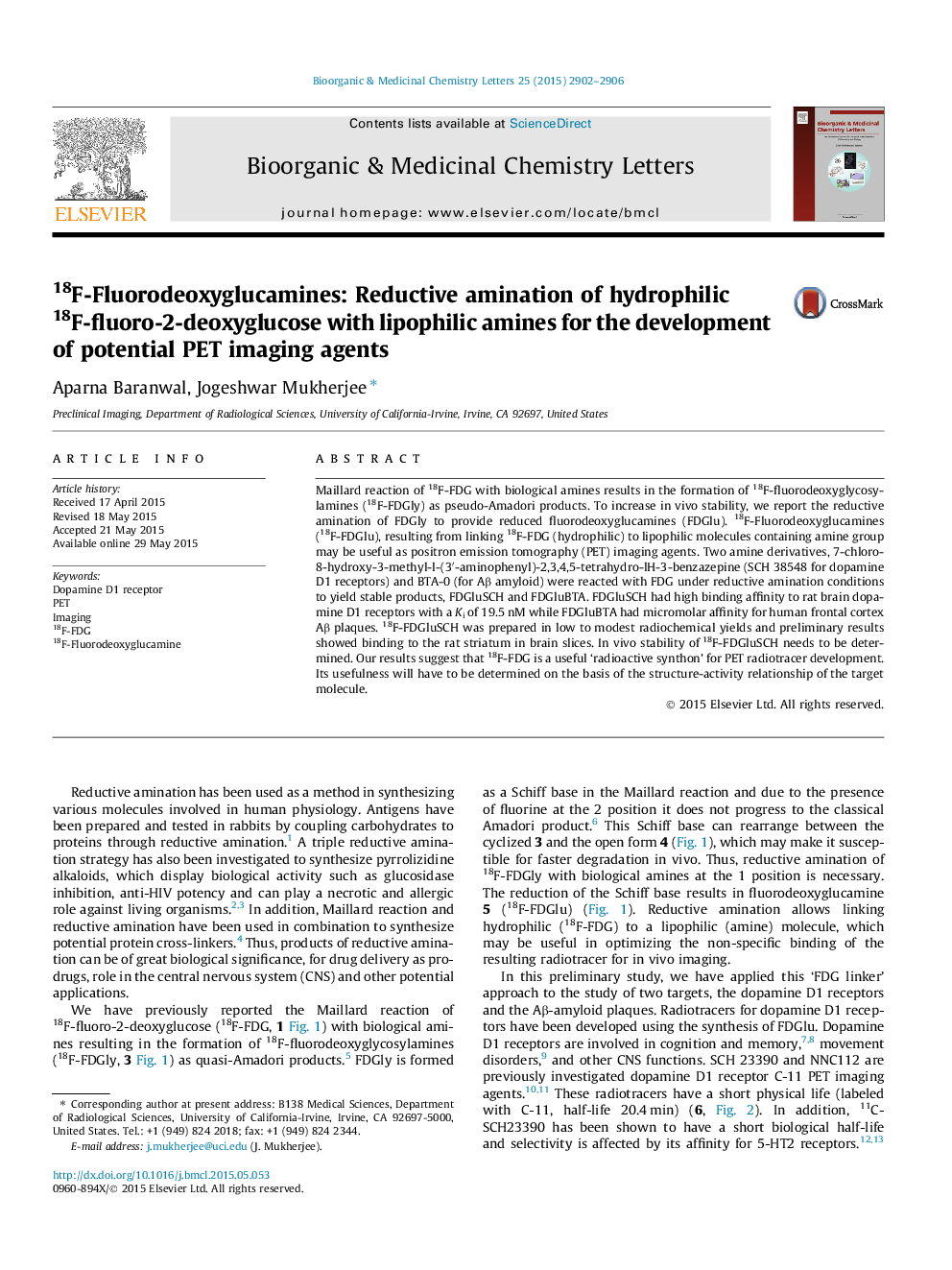| Article ID | Journal | Published Year | Pages | File Type |
|---|---|---|---|---|
| 1370689 | Bioorganic & Medicinal Chemistry Letters | 2015 | 5 Pages |
Maillard reaction of 18F-FDG with biological amines results in the formation of 18F-fluorodeoxyglycosylamines (18F-FDGly) as pseudo-Amadori products. To increase in vivo stability, we report the reductive amination of FDGly to provide reduced fluorodeoxyglucamines (FDGlu). 18F-Fluorodeoxyglucamines (18F-FDGlu), resulting from linking 18F-FDG (hydrophilic) to lipophilic molecules containing amine group may be useful as positron emission tomography (PET) imaging agents. Two amine derivatives, 7-chloro-8-hydroxy-3-methyl-l-(3′-aminophenyl)-2,3,4,5-tetrahydro-lH-3-benzazepine (SCH 38548 for dopamine D1 receptors) and BTA-0 (for Aβ amyloid) were reacted with FDG under reductive amination conditions to yield stable products, FDGluSCH and FDGluBTA. FDGluSCH had high binding affinity to rat brain dopamine D1 receptors with a Ki of 19.5 nM while FDGluBTA had micromolar affinity for human frontal cortex Aβ plaques. 18F-FDGluSCH was prepared in low to modest radiochemical yields and preliminary results showed binding to the rat striatum in brain slices. In vivo stability of 18F-FDGluSCH needs to be determined. Our results suggest that 18F-FDG is a useful ‘radioactive synthon’ for PET radiotracer development. Its usefulness will have to be determined on the basis of the structure-activity relationship of the target molecule.
Graphical abstract18F-Fluorodeoxyglucamines were synthesized as a potential new avenue for PET radiotracer development, where lipophilicity of the radiotracer may be an issue. The rapid linkage of 18F-FDG to the biological amine of interest was tested to synthesize the dopamine D1 receptor radiotracer, 18F-FDGluSCH which showed good biological properties.Figure optionsDownload full-size imageDownload as PowerPoint slide
